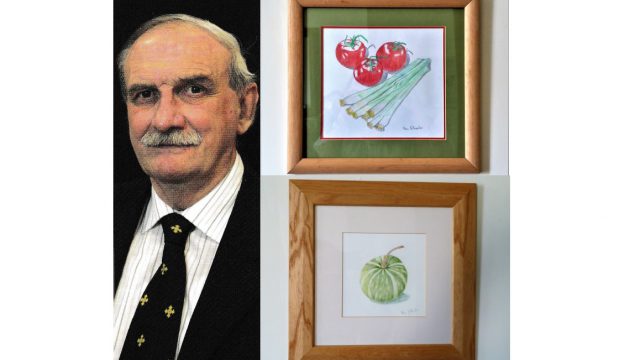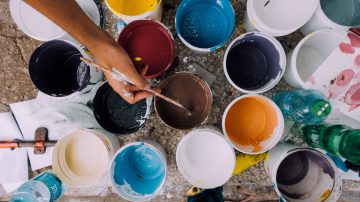I was ready to start an art workshop with a group of patients from Dovetail Ward of the Michael Carlisle Centre of the NHS. The occupational therapists had gone to fetch them to the art room where I was waiting.
A mixed group of men and women arrived and were duly ushered in and seated at tables around the room. They were stoney-faced and I thought “This will be an interesting session!”. I managed to catch the eye of one of the therapists and asked her, in a whisper, how they had been chosen to attend. She put her arm up her back, indicating that they had been ‘persuaded’. I guessed as much!
They all stared grimly ahead in silence. Suddenly, one of the women strode purposefully up to the front, looked me squarely in the face, and shouted “I CAN’T DRAW.” I said, “Oh yes you can, I’m going to show you.” At this point the woman strode back to her seat and the therapists slipped unobtrusively out of the room, leaving me to it.
Everyone in the group had the equipment they needed: a sheet of good quality A4 drawing paper, a pencil, an eraser, and a range of coloured pencils. I pointed out that they each also had a large sycamore leaf with its distinctive shape, prominent veins and interesting colours.
Despite my enthusiasm I was met with looks that implied a collective “I can’t draw”. I then told them that we were going to cheat. This proved to be a lightbulb moment. They showed a spark of interest at the word ‘cheat’ – they obviously liked that idea. I am often called an eternal optimist and I could sense that the tide was turning.
I then showed them how to cheat. I picked up the leaf that I had kept for demonstration and said “Watch what I do and you do exactly the same”. Holding the leaf firmly by the stalk, I held it against the whiteboard so all could clearly see and drew around the outline of its shape. They did the same on their sheets of A4. The effect was unbelievable. Everyone was delighted by the result – we all had an excellent copy of the outline of our leaves.
I then told them to look carefully at one hand and notice the pattern of lines covering the palm, then to look at one side of the leaf, noticing that the veins formed a similar pattern. “Draw them carefully into your leaf shape” I said. Then I told them to look at the range of colours on the leaf and put them in too.
At that point the occupational therapists crept back into the room. They said they had never known the group so engrossed in what they were doing. I said “It’s because we’ve been cheating!” and I explained the procedure. So the therapists themselves sat down and began to draw. By the end of the session everyone had made a good finished picture of the leaf and were proud of what they had achieved.
Not long after this session I was invited to the Daleside Christmas party. Among the revellers I noticed the people who had attended my art workshop and amongst tham was the lady who had shouted “I CAN’T DRAW”. She was talking to another lady and I couldn’t resist going up to them. I said, “You know your friend here. She said she couldn’t draw and then went on a to produce a lovely coloured drawing of a leaf.” Later, the lady came up to me and apolologised for behaving so badly at the workshop. She went on to say how much she had enjoyed drawing the leaf after all, and that since then has been doing art work because it makes her feel good every time she does a drawing. In fact, art has made her feel better about herself generally as a person.
I was absolutely delighted and this made me feel good, too. The therapeutic effect of art can be life-changing.



